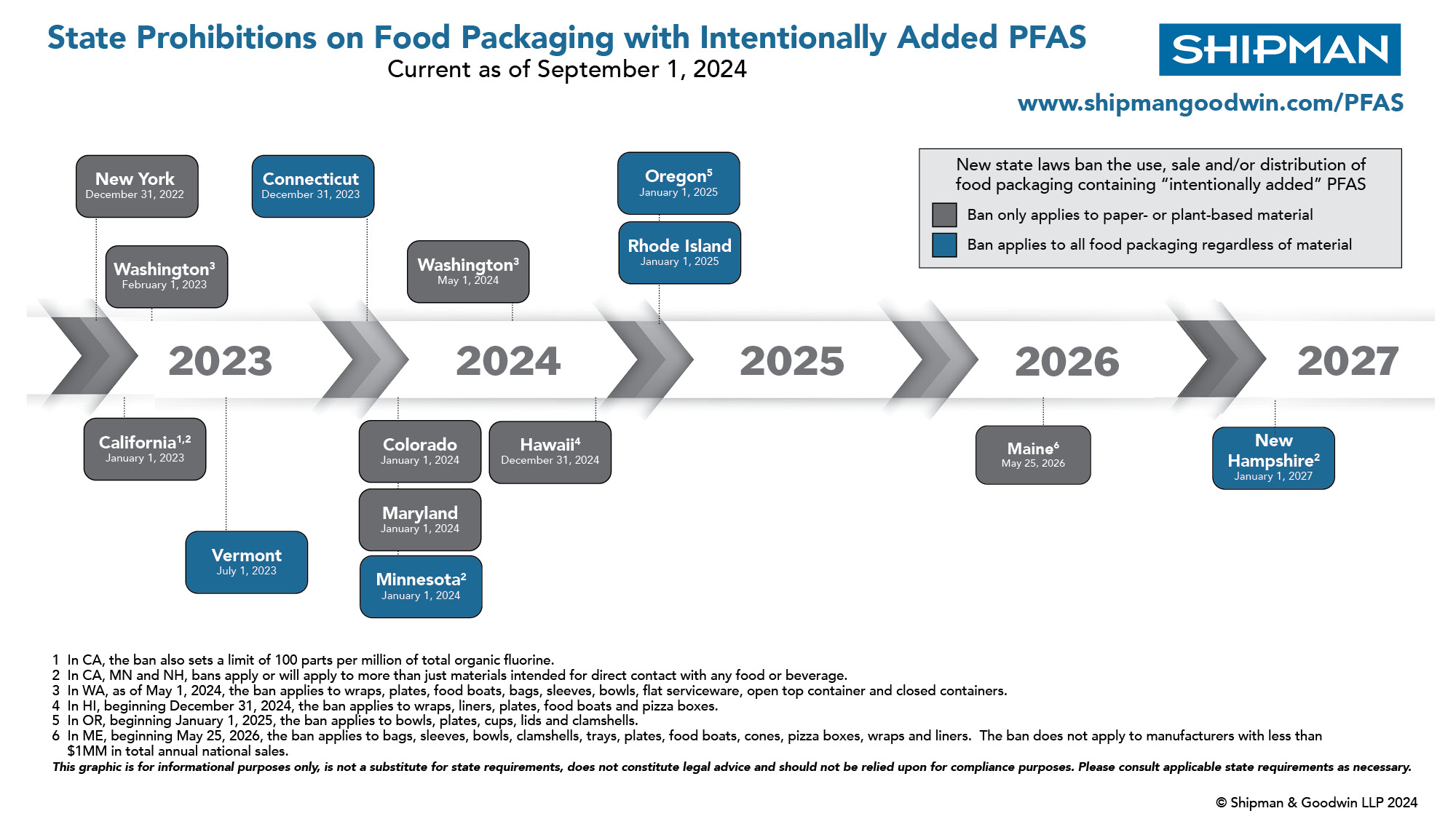Connecticut’s ‘Intentionally Added’ PFAS Food Packaging Ban Now Effective
A CBIA Manufacturing Spotlight Article | Articles
March 5, 2024
Beginning Dec. 31, 2023, food packaging used in Connecticut cannot include intentionally added per- and polyfluoroalkyl substances.
All food producers and packaging manufacturers with products sold or distributed in Connecticut must assess their compliance with this far-reaching ban, which:
- Pertains to any package or packaging component applied to or in direct contact with any food or beverage, such as wraps, to-go containers, food boats and cups;
- Prohibits PFAS that are “intentionally introduced” during manufacturing or distribution where their continued presence is desired for a specific characteristic, appearance or quality (e.g., grease resistance); and
- Prohibits PFAS alternatives or replacements if such chemicals create an equal or greater hazard than the PFAS being replaced; but
- Does not prohibit PFAS present in food packaging or packaging components due to recycled materials.
Widespread Bans
As detailed in a prior post, Connecticut is one of several states acting independently to ban intentionally added PFAS in food packaging, with laws in New York, California, Washington (partial), Vermont, Colorado, Maryland, and Minnesota already in effect.
Looking ahead, food and beverage manufacturers can anticipate new or updated laws in Washington, Rhode Island, and Hawaii to come online in 2024.
Additionally, Maine modified its upcoming requirement that manufacturers notify the state of products with intentionally added PFAS to apply only the PFAS content of the product—not its packaging—and revised the effective date to Jan. 1, 2025.

The state-by-state patchwork approach makes it critically important for manufacturers and distributors with multi-state footprints to be aware of, and understand, each ban and their differences to ensure compliance with all applicable requirements.
We have already seen high-profile voluntary recalls of food products implemented by companies in several states.
At the federal level, although food packaging-specific legislation and regulation continues to lag behind the states, the U.S. Food and Drug Administration recently announced the successful voluntary phase out of grease-proofing substances containing certain PFAS that had historically been applied to paper and paperboard packaging.
Additionally, the FDA announced it is developing a validated analytical method to improve PFAS testing for food contact substances.
Next Steps
Food and beverage manufacturers with local and multi-state footprints should assess their food packaging supply chains by reviewing applicable supplier safety data sheets and requesting formal compliance assurance letters from packaging suppliers—and expect similar requests from downstream distributors, wholesalers and retailers.
These compliance assurances can provide access to “safe harbor” provisions in some states’ laws, including New York, which allow manufacturers, distributors and retailers to rely on written assurances from their food and food packaging suppliers.
Food packaging is just one of many facets of the ever-increasing regulatory burden surrounding PFAS, particularly in the food & beverage sector.
Thus, we recommend a proactive and coordinated legal and technical approach to develop an appropriate risk management plan to identify, mitigate (including with insurance) and manage the nuanced and evolving rapidly PFAS risks associated with past, present and future business operations or potential transactions in Connecticut and beyond.
This article first appeared on CBIA's website and is published here with permission.
